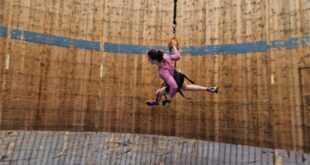Photography Is No Longer Evidence of Anything

For weeks now, the world has been awash in conspiracy theories spurred by weird artifacts in a photographic image of the missing Princess of Wales that she eventually admitted had been edited. Some of them got pretty crazy, ranging from a cover-up of Kate’s alleged death, to a theory that the Royal Family were reptilian aliens. But none was as bizarre as the idea that in 2024 anyone might believe that a digital image is evidence of anything.
Not only are digital images infinitely malleable, but the tools to manipulate them are as common as dirt. For anyone paying attention, this has been clear for decades. The issue was definitively laid out almost 40 years ago, in a piece cowritten by Kevin Kelly, a founding WIRED editor; Stewart Brand; and Jay Kinney in the July 1985 edition of The Whole Earth Review, a publication run out of Brand’s organization in Sausalito, California. Kelly had gotten the idea for the story a year or so earlier when he came across an internal newsletter for publisher Time Life, where his father worked. It described a million-dollar machine called Scitex, which created high-resolution digital images from photographic film, which could then be altered using a computer. High-end magazines were among the first customers: Kelly learned that National Geographic had used the tool to literally move one of the Pyramids of Giza so it could fit into a cover shot. “I thought, ‘Man, this is gonna change everything,’” says Kelly.
The article was titled “Digital Retouching: The End of Photography as Evidence of Anything.” It opened with an imaginary courtroom scene where a lawyer argued that compromising photos should be excluded from a case, saying that due to its unreliability, "photography has no place in this or any other courtroom. For that matter, neither does film, videotape, or audiotape.”
Did the article draw wide attention to the fact that photography might be stripped of its role as documentary proof, or the prospect of an era where no one can tell what’s real or fake? “No!” says Kelly. No one noticed. Even Kelly thought it would be many years before the tools to convincingly alter photos would become routinely available. Three years later, two brothers from Michigan invented what would become Photoshop, released as an Adobe product in 1990. The application put digital photo manipulation on desktop PCs, cutting the cost dramatically. By then even The New York Timeswas reporting on “the ethical issues involved in altering photographs and other materials using digital editing.”
Adobe, in the eye of this storm for decades, has given a lot of thought to those issues. Ely Greenfield, CTO of Adobe’s digital media business, rightfully points out that long before Photoshop, film photographers and cinematographers used tricks to alter their images. But even though digital tools make the practice cheap and commonplace, Greenfield says, “treating photos and videos as documentary sources of truth is still a valuable thing. What is the purpose of an image? Is it there to look pretty? Is it there to tell a story? We all like looking at pretty images. But we think there's still value in the storytelling.”
To ascertain whether photographic storytelling is accurate or faked, Adobe and others have devised a tool set that strives for a degree of verifiability. Metadata in the Middleton photo, for instance, helped people ascertain that its anomalies were the result of a Photoshop edit, which the Princess owned up to. A consortium of over 2,500 creators, technologists, and publishers called the Content Authenticity Initiative, started by Adobe in 2019, is working to devise tools and standards so people can verify whether an image, video, or recording has been altered. It’s based on combining metadata with exotic watermarking and cryptographic techniques. Greenfield concedes, though, that those protections can be circumvented. “We have technologies that can detect edited photos or AI-generated photos, but it’s still a losing battle,” he says. “As long as there is a motivated enough actor who's determined to overcome those technologies, they will.”
With generative AI, the story becomes more complicated, making it much easier to alter photos in dramatic fashion. A year ago, Adobe introduced its AI product Firefly, calling it “your imagination’s best friend.” So much for reality. Users have messed with over 6.5 billion images, a number so huge that one might now be justified in questioning every photo one encounters. One could take solace in arguing that Firefly users are mostly in the creative class, creating mixes of reality and digital filigree for artistic effect. But AI image manipulation techniques are now permeating our personal photo collections, which once stood as a chronicle of captured reality, a visual document of our past. Now they’re as suspect as a princess’s Instagram.
Consider what’s arguably the leading photo app, Google Photos. It now uses an AI tool called Magic Editor to “reimagine” images originally marred by their annoying fidelity to reality. In the editing process you can move things and people around, and even change a gloomy sky to a bright one. One example Google offers is a photo of a loved one on a well populated beach. Why clutter the image with strangers frolicking in the background? With “Magic Eraser” you can zap them and fill in the background as if they were never there. That 1989 New York Times article presented the “chilling concept” of hundreds of thousands of divorcees removing ex-spouses from their photos. That’s now a core feature of Google Photos, which empowers you to consign exes to the memory hole as easily as you dispatch photo-bombers.
I asked Google Photos senior product manager Zach Senzer to explain the philosophy behind those features. It’s not a Soviet-style rewriting of history, he says, but a way to solve a problem. “We want users to have control of a moment, to represent the way they think best reflects their experience and memory,” he says. “If I'm taking a picture of someone on a beach, I'm not remembering all those people in the background: My memory is the highlight,the person I'm taking a picture of on a sunny day. So when I talk about being authentic to the moment, it's about preserving the memory that they're trying to relay.” In other words, authenticity doesn’t mean what the camera lens sees–it’s what your heart wants. Apparently, this manipulation seems to be edging towards a default means of storing memories. According to Senzer, users of Google Photos edit 1.7 billion images a month. (The company did not share which percentage that is of all photos taken.)
One might be tempted to say that the only proof now that something is real comes when you can see it for yourself. But consider Apple’s Vision Pro. When people don that headset, they view a mix of the real world intermingled with a digital layer. But that so-called “real” world isn’t directly visible to one’s eyes—instead a suite of cameras presents video images of what the eye would normally see. That videostream is prone to manipulation—in fact, recreating reality is the point of such devices. If you stroll out into the street wearing one of those, who knows—maybe the Royal Family Industrial Complex will hack your goggles to insert a convincing digital representation of Kate Middleton, shuffling through Wegman’s in her leggings.
All of this should have been apparent long ago. The trustworthiness of what we see no longer relies on images and videos themselves. Our belief in what we are presented with hinges on the credibility of who is presenting it. Maybe if the Windsors had a track record of straightforwardness, people would have accepted the image as a family photo, mildly rinsed by a Photoshop tweak.
Kelly, the guy who saw this coming in 1985, thinks that we’re simply returning to a natural order. “For all of human existence, you couldn’t tell when something was true or not,” he says. “Then we had this brief moment when the photograph became evidence to prove something. Now we're back to exactly the same thing, which is that the only way to verify the truth is you have to trust the source.” In an era where trust is at a minimum—and any random image can be globally distributed in an instant—that’s not terribly reassuring.

Digital manipulation might destroy the value of photographs as evidence, but the fungibility of bits allows for amazing acts of creativity. That was my point in a short 2005 Newsweek item about how the attendees of a conference called ETech were celebrating that freedom. The headline says it all: “Life Isn’t Just as You Want it? Remix It!”
The point of the conference was to [demonstrate] an increasingly commonplace process: people using cheap and accessible digital tools to "remix" the world around them. Just as music producers sometimes go back to the original components of a tune—boosting some instruments, sweetening the tone and maybe adding a voiceover—consumers can view the formerly one-size-fits-all aspects of their environment as a jumping-off point for hands-on customization.
"It used to be that when you wanted something, you went and made it. Then we turned into a bunch of consumers," says Joshua Schachter, whose website, del.icio.us, allows people to remix their browser bookmarks with those of other visitors to the site. As conference chair Rael Dornfest put it, we’re remixing our music consumption by buying songs online one at a time instead of in CD collections. We're remixing our TV behavior as TiVo-style video recorders let us "make every night Thursday night." We're remixing our media by grabbing online articles from dozens of different sources–and then broadcasting our own opinions with blogs. When you get down to it, the remixing metaphor applies to almost any area you can think of. Some of the sessions at ETech bannered the remixing of radio, DNA, politics and culture …
If you look at the population as a continuum, with the hacker-y ETech people at one end of the spectrum and the overloaded neo-Luddites at the other, there's a vast middle ground, some more open to remixing than others. "We distinguish between the iPod mainstream and the Coca-Cola mainstream," says Caterina Fake, cofounder of a collaborative photo-sharing Web site called Flickr. Obviously only the former crowd will consider using her product to blend its photos with the collective snapshot output of thousands of strangers. On the other hand, even the Coca-Cola mainstream has adopted the technology of digital photography.

Lauren asks, “What would you have done if you hadn’t been a journalist?”
Thanks for the very good question, Lauren. I wish I could answer it definitively. But who knows what alternative universes hold? Probably GPT-22, but I don’t have access to it.
My entry into the journalism world was less of a sliding-door moment involving a binary choice between two careers than an instinctual drift after I determined that a life in academia wasn’t for me. If I go back to my undergraduate days, I recall that two things interested me: writing and music. And a lot of my writing was about music, especially during a stint as the rock critic for the Temple News. I also made music, of a sort, as a guitar-strumming performer nosing into the lowest rung of Philadelphia’s coffeehouse culture. I was a mediocre guitar player and didn’t have much of a voice. But I did write some pretty good songs. If I’d developed that craft full-time instead of going to graduate school, maybe I would have eventually gotten some artists to cover my tunes, and I would be one of those semi-anonymous people in the agate type underneath the performer credit. I don’t think I would have risen to the top rank of songwriters, but I imagine that pursuing that career might have been a lot of fun. But I never would have met Steve Jobs or worked at WIRED!
You can submit questions tomail@wired.com. Write ASK LEVY in the subject line.

Is 2024 the end of the world? Citing the annum we are living in right now, Nostradamus said “The dry earth will grow more parched, and there will be great floods.” Also, Boston Globe columnist Alex Beam notes that a 1960 movie called Beyond the Time Barrier is about a Cold War–era fighter plane landing in 2024 “only to discover that a worldwide plague had transformed most earthlings into sterile mutants.” Not in the movie: a president who said it was no worse than the flu.

I spoke to all eight of the authors of the famous Transformer paper to tell the story of their AI breakthrough that’s still roiling Silicon Valley.
The Department of Justice and a dozen states are suing Apple in what the DOJ calls “an iPhone monopoly.”
Hackers have figured out how to instantly open 3 million hotel keycard locks. Where’s that in-room safe?
The startup Perplexity is competing with Google to reinvent search with AI. But the big news, as reported by WIRED’s Lauren Goode, is that its CEO has memorized entire passages of my book In the Plex. Sundar, can you match that?

Morgan Meaker
Will Knight
Makena Kelly
Dell Cameron
Morgan Meaker
Estelle Erasmus
Vittoria Elliott
Amanda Hoover
*****
Credit belongs to : www.wired.com
 MaharlikaNews | Canada Leading Online Filipino Newspaper Portal The No. 1 most engaged information website for Filipino – Canadian in Canada. MaharlikaNews.com received almost a quarter a million visitors in 2020.
MaharlikaNews | Canada Leading Online Filipino Newspaper Portal The No. 1 most engaged information website for Filipino – Canadian in Canada. MaharlikaNews.com received almost a quarter a million visitors in 2020.
















